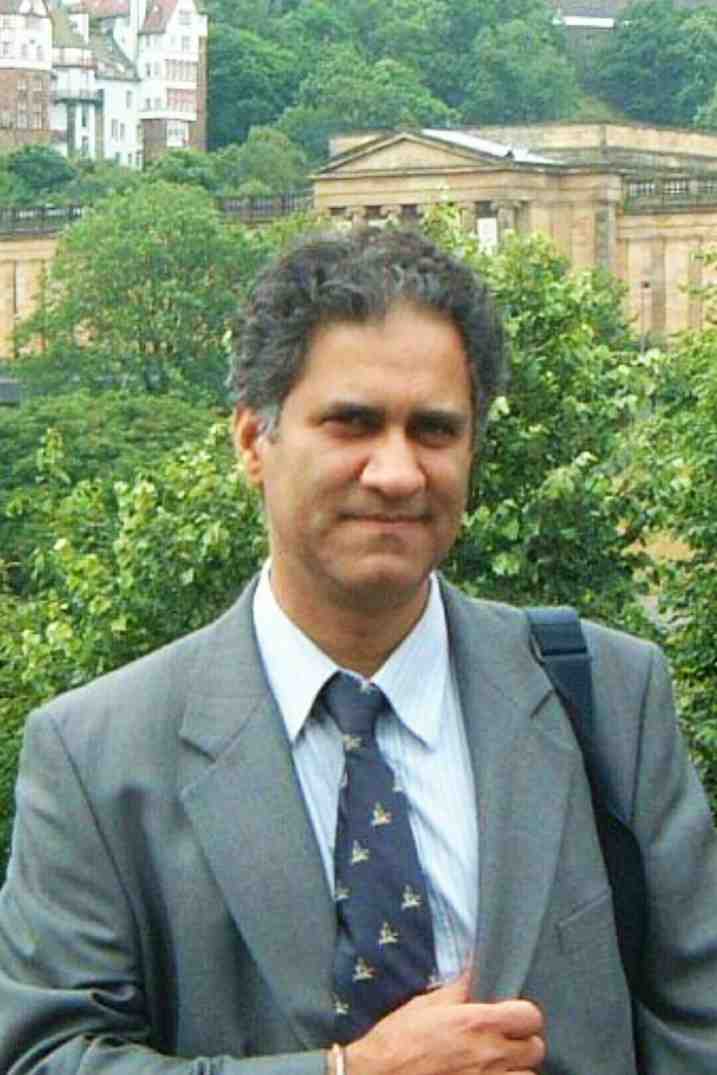AUCTORES
Globalize your Research
Research Article | DOI: https://doi.org/10.31579/2693-2156/131
*Corresponding Author: Cruz García Lirios. Universidad Autónoma de la Ciudad de México.
Citation: Cruz García Lirios 1, Julio E Crespo2, Juan Guillermo Mansilla Sepúlveda3, (2025) Confirmatory factor analysis of an instrument comparing Top-Down and Bottom-Up approaches to the Sustainable Development Goals (SDGs). Journal of Thoracic Disease and Cardiothoracic Surgery, 6(3); DOI: 10.31579/2693-2156/131
Copyright: © 2025 Cruz García Lirios. This is an open-access article distributed under the terms of The Creative Commons Attribution License, which permits unrestricted use, distribution, and reproduction in any medium, provided the original author and source are credited.
Received: 25 March 2025 | Accepted: 21 April 2025 | Published: 12 May 2025
Keywords: Confirmatory Factor Analysis, Bottom-Up, Structural Equation Model, Sustainable Development Goals, Top-Down
The top-down approach is characterized by the policies issued by the State towards the governed. In contrast, the bottom-up approach entails the construction of demands and participation from citizens towards their authorities. Both perspectives are of interest in the context of implementing the Sustainable Development Goals (SDGs) in local institutions. This study aimed to compare both approaches to confirm their theoretical structure. A cross-sectional, psychometric, confirmatory, and correlational study was conducted with university students selected to implement the SDGs in their institutions. The results confirmed two of the five factors of analysis. Based on the current state of research, it is recommended that the study be expanded to verify the factorial structure and anticipate implementation scenarios of policies related to the SDGs at a local level.
The history and theory of capabilities are based on the work of economist and philosopher Amartya Sen and philosopher Martha Nussbaum (Jiménez-Aceituno et al., 2020). This approach is central to human development and can be linked in meaningful ways to the Sustainable Development Goals (SDGs), as both seek to improve people’s quality of life in an inclusive, equitable, and sustainable way.
Amartya Sen proposed this theory in the 1980s as an alternative to traditional approaches to development that focused primarily on economic growth or the satisfaction of basic needs (Espey, 2021). Sen argued that development should be measured by people’s ability to lead lives they value, which includes their freedom to choose and act. Building on Sen’s ideas, Martha Nussbaum expanded the approach with a list of core capabilities considered necessary for a dignified life, such as access to health, education, employment, and respect for human dignity.
The United Nations Development Programme (UNDP) Human Development Report of 1990 incorporated Sen’s ideas, introducing the Human Development Index (HDI), which measures people’s capabilities based on health, education, and income (Kaiser, 2020). This marked a fundamental shift towards a more comprehensive view of development.
The capabilities approach focuses on what people can “be” and “do” (Reuter, 2023). That is, capabilities represent the set of real opportunities that people have to lead a whole life. Sen’s approach emphasizes the absolute freedom of individuals to make meaningful decisions in their lives, considering that factors such as inequality, poverty, or lack of rights can limit these opportunities. The theory focuses on well-being (material and non-material living conditions) and agency, which is the ability to act and make decisions to influence one’s life and society.
The SDGs, adopted in 2015 by the United Nations, are designed to address the world’s most pressing challenges, such as poverty, inequality, climate change, and education (Gau & Viswanathan, 2018). The capabilities approach helps understand how the SDGs seek to improve people’s lives, as both focus on creating environments that enable individuals to develop their potential. SDG 1 (No poverty) and SDG 10 (Reduced inequalities) are directly related to people’s absolute freedom to escape deprivation and poverty, central to capabilities theory. SDGs 3 (Good health and well-being) and 4 (Quality education) promote access to essential conditions for people to develop their capabilities and achieve a life they value.
The agency's approach is reflected in SDGs such as 5 (Gender Equality) and 16 (Peace et al.), which seek to empower people, particularly traditionally marginalized groups, to take an active role in their communities and decision-making (Bilsky et al., 2021). The capabilities theory shares a comprehensive approach to development with the SDGs. It is not just about economic growth or traditional development indicators but about improving people's lives equitably and sustainably. The history and theory of capabilities provide a conceptual framework that complements the SDGs, focusing on how people can live dignified and meaningful lives and under what conditions must be created for these capabilities to be fully developed.
Capabilities are for every person, without using any of them as a means for the capabilities of others or those of the whole (Nussbaum, 2011: p. 55). Such capabilities must be granted at least by the State by treating individuals as equals and as agents of capabilities. Consequently, development means longevity, health, and creativity. This indicates that women live less than men and live longer only in one region in the north because customs and traditions are reversed.
The health system is delegated to the states, and the care service is better because it impacts the users (Nussbaum, 2011: p. 23). It is a system that limits the participation of women when they are not economically or academically empowered. The double shift consists of domestic work and child-rearing or palliative care. The capabilities approach evaluates the quality of life and social justice. In this way, the faculties of self-definition of people prevail in the face of injustice and social inequalities. The approach is one of capabilities without referring to fundamental justice or human dignity.
Capacity as substantive freedom or alternative combinations of functioning or totalities of choice opportunities in public spheres (Nussbaum, 2011: p. 40). Capabilities are internal instances and fluids of people or social, economic, and political interactions. This means that the development of capabilities is internal, through education or family. Basic capabilities are the basis of tender and combined capabilities, but they differ from innate capabilities that do not require volitional interaction. In this sense, those who exceed the threshold are less worthy of attention than those who do not.
State functioning is the realization of capabilities (Nussbaum, 2011: p. 44). Functioning are beings and actions where capabilities are materialized. Capabilities are areas of freedom and choice. The State must treat people with respect and refrain from humiliating them. Mature capabilities are the development of primary, internal, and combined capabilities. Dignity is a condition of universal equality in people because they are considered agents. Treating people as equals does not mean equalizing the conditions of existence. The capabilities approach protects areas of freedom. The freedom given by the State is inherent to human dignity.
Each person is an end (Nussbaum, 2011: p. 55). Therefore, social justice is dignity above the ten thresholds that favor the development of capabilities. The best possible intervention is to create a future where people do not have to continue facing this choice. The capacities of practical reason as organizers of internal, essential, combined, and mature capacities. In this sense, membership is a social recognition of their capacities.
The capabilities approach addresses distributive problems based on minimum dignity thresholds but does not clarify how to proceed with injustice detected below these minimum dignity levels (Nussbaum, 2011: p. 60). Multilateral equality relative to capabilities inhibits local law and its autonomy from its respective contexts and histories. It functions as fertile because it favors other capabilities. This means that corrosive disadvantage prevails because it limits capabilities.
An attempt is made to outline the approach to capabilities based on their characterization as essential, internal, combined, mature, or practical reasons (Goel et al., 2021). The exposition of the order of the capabilities is mentioned when defining and placing them in diverse scenarios common to people. Some examples of groups whose rights and capabilities have been violated, but the theory is desirable rather than normative. The concept of capabilities is widely established in different contexts. The premise that capabilities underlie minimum thresholds the State grants is always defended. However, when they are realized in practical freedoms, they are self-responsibilities of choice of individuals, even when asymmetries prevail between them. The relationship of citizens with the State will solve the minimum problems of the distribution of resources and infrastructure for the development and consolidation of their capabilities.
While it is true that the modern State was born with the mandate to intervene in security, the capabilities approach seems to overlook the fact that the State intervenes in a coercive rather than a persuasive way (Allen et al., 2016). In this sense, the persuasive capabilities approach, according to which the coercive State grants freedoms that we can transform into all kinds of capabilities, seems to contravene the essence of the gendarme State. The claim of universality of the capabilities approach versus the autocratic coercion that distinguishes the intervening State seems to fit into a scenario in which individuals, even called agents, are mere spectators of their security and the conditions that allow them to develop their capabilities.
The capabilities approach seems to be the palliative that the coercive State needs to convince voters that their security precedes their dignity (Ballerin & Bergh, 2021). Such a relationship is substantial since dignity would be closer to freedom as a practical execution, even if established at minimum thresholds. On the other hand, security is inherent to the coercion of the State itself, which must be limited rather than opened up. Suppose the State is coercive to guarantee security at best. In that case, individuals, in the development of their capabilities, must limit the punitive initiatives and corrosive strategies that the State's inefficiency in the provision of justice reaches when it dictates who should or should not be prosecuted, tried, or convicted. The capabilities approach focuses on minimum thresholds of dignity and does not intend to solve the problem of distributing resources and functions among people.
The capabilities approach refers to minimum levels of personal dignity that can only emerge from the thresholds of state security (Allen et al., 2017). Precisely, the capabilities approach seems contemplative in the face of the omnipresence and ubiquity of the State versus the individual responsibility for the development of capabilities or practical freedoms. Neither the state nor the individual seems to assume thresholds of responsibility that allow them to modify the relationship between the state gendarme, which allows the development of individual capabilities, only because such intervention results in practical reasoning. In Kundera's proposal (1984), such state and individual lightness would be resolved with the specific weight of responsibilities that anchor people and governments in a concrete and less symbolic dignity-related purpose. After security and capabilities, functioning and affiliation seem to be two underlying and collateral categories that seem to recall the importance of responsibility as an imperative of the consequences of decisions and actions.
| Dimension | Robert Nozick (Theory of Justice as Liberty) | John Rawls (Theory of Justice as Equity) | Amartya Sen (Capability Theory) | Martha Nussbaum (Core et al.) |
| Justice | Justice is based on individual rights and non-intervention by the State. It focuses on justice as negative freedom, not being coerced. | Distributive justice is based on the principle of difference (benefiting the less favored) and equality of opportunity. | Justice is evaluated through people's ability to achieve a dignified life beyond the mere distribution of goods. | Similar to Sen, but more normative, it focuses on ensuring a list of core capabilities for all individuals as the basis for a just society. |
| Freedom | Negative liberty: The main concern is that individuals should not be impeded in pursuing goals. The state should guarantee private property and avoid coercion. | Liberty as justice: Rawls believes individual liberty must be balanced with social equality to ensure everyone has the same opportunities. | Positive liberty: the ability of individuals to lead valuable and meaningful lives depends on real opportunities, not just the absence of coercion. | Positive freedom, too, but with a specific list of capabilities that ensure a whole life, such as the right to health, education, and political participation. |
| Equality | Nozick opposes any form of wealth redistribution that interferes with private property. There is no emphasis on equality except in the protection of rights. | Equality must be guaranteed through fair institutions, which ensure equal opportunities and try to compensate for natural or social disadvantages. | It focuses on equal capabilities: Beyond distributing goods, Sen seeks to eliminate the barriers preventing people from developing their potential. | Equality of capabilities emphasizes that everyone should have access to a minimum list of capabilities necessary for a dignified life. |
| Human Development | Human development is not an explicit objective. The central goal is to protect private property and individual freedom. | Human development is indirect since it arises from guaranteeing a distributive justice scheme that offers all equal opportunities. | Human development is central to improving people's capabilities to lead the lives they value, regardless of their resources. | Human development is normative and articulated through a list of essential capabilities that must be guaranteed, such as health, employment, and political participation. |
| Dimensions of Capabilities | Nozick does not consider the capability approach. He focuses on protecting individual rights and ensuring the state's non-intervention. | Capabilities are considered indirectly through equitable redistribution and ensuring social justice, although they are not conceptualized as a specific approach. | Capabilities are central to his theory. People should be free to choose between different ways of life, depending on their capacity to act accordingly. | It defines a concrete list of core capabilities essential for any human being: life, health, physical integrity, affiliation, political participation, and others, which must be guaranteed for justice. |
| Role of the State | The state should be minimal, intervening only to protect property rights and prevent coercion. | The State must guarantee justice as equity, with a fair distribution of goods and opportunities. This includes designing institutions that ensure equality of opportunity. | The State must ensure people have the opportunities and capabilities to lead dignified and valuable lives. | The State is responsible for guaranteeing a list of basic capabilities so that people can lead fully human lives and participate in society. |
| Relationship with the SDGs | Nozick would not support state interventions to implement the SDGs, believing redistribution coerces property rights. | Rawls’ distributive justice could support the SDGs, as it seeks to benefit the least advantaged and ensure equal opportunity. | Sen’s capabilities approach is aligned with the SDGs, as it promotes human development and the improvement of real opportunities for all people. | Nussbaum also aligns herself with the SDGs, advocating for ensuring fundamental capabilities corresponding to human rights and dignity. |
Table 1. Comparison between capacities, political systems, forms of State and government regimes
However, the discussion between Nozick, Rawls, Sen, and Nussbaum is a top-down perspective where decisions are established by the State (Günzel-Jensen et al., 2020). The bottom-up approach is different and involves high participation in public affairs. Therefore, this work aimed to compare the top-down theory with the Bottom-up perspective to establish the capacities related to the SDGs.
Are there significant differences between the capabilities a top-down theory defines concerning these emerging categories in the bottom-up perspective?
This paper assumes that the Top-down perspective is precisely distinguished from the Bottom-up perspective in the capabilities concept. Therefore, differences are expected even within Top-down theories.
Method
Design. A psychometric, confirmatory, cross-sectional, and correlational study was conducted with 100 students selected for their affiliation with institutions committed to the SDGs as vocational training guidelines.
Instrument. The Bottom-Up Scale was used (see Appendix A). It includes dimensions related to 1) freedom, 2) justice, 3) equity, 4) capabilities, and 5) satisfaction. Reliability reached values above the minimum required of 0.60, with alphas and omegas between 0.762 and 0.780. Sphericity was significant, and adequacy exceeded the minimum requirement of 0.60 with a KMO value of 0.760. Validity ranged between 0.345 and 0.547.
Procedure. A communication of the project's objectives, responsibilities, and functions was distributed via email to the sample surveyed. They were sent a letter to attend a focus group to homogenize freedom, justice, equity, capabilities, and satisfaction. They were invited to the Delphi study to evaluate the reagents and collect comments. The survey was applied at the facilities of the public university.
Analysis. The reliability, adequacy, sphericity, validity, adjustment, and residual coefficients were estimated to contrast the null hypothesis regarding significant differences between the theoretical structure known as Top-Down and an empirical study from the bottom-up logic.
The analysis of the factorial weights reveals the latent factors. The values exceed the threshold of 0.300 to consider the construct validity. The residual analysis indicates the degree of adjustment of the observed structure concerning the empirical structure. The findings show significant values between half of the measurement errors, indicating one substructure's prevalence over the other. In the case of the intercept analysis, which indicates the prediction of the factorial structure, the values were significant. On the other hand, the covariance and residual matrices reach values more significant than one, which indicates the non-inclusion of other factors and indicators in the model. Finally, the covariance matrix analysis between the selected indicators includes a diagonal of zero, which indicates the non-inclusion of more variables in the model (see Fig. 1).

Figure 1. Covariances between indicators of liberty and equity
Structural analysis of the relationships between factors, indicators, and measurement errors suggests the model's parsimony (see Fig. 2). The findings show three Heywood cases that suggest reducing the model to three indicators with their respective factors.

Figure 2. Model of confirmatory factor analysis of bottom-up perspective
The fit and residual values [x2 = 73.252 (9gl) p > 0.001; GFI = 0.976; MFI = 0.725; RMSEA = 0.212] suggest the non-rejection of the null hypothesis regarding significant differences between the theoretical structure and the structure empirical. There are differences between the top-down approach and the bottom-up perspective, although only two of the five possible factors are confirmed.
This work's contribution to the state of the art lies in comparing the factorial structure of the theoretical perspective known as Top-Down concerning the Bottom-Up approximation. The results suggest the null hypothesis is not rejected relative to the differences between the perspectives, although it was only possible to confirm two of the five factors analyzed.
Freedom and equity are crucial in the context of sustainable development goals (SDGs). The National Strategy on Equity and Gender Equality emphasizes the importance of the idea that every individual should have equal opportunities (Nagati et al., 2023). Equity, justice, and the SDGs are interconnected, with justice being vital to achieving equality, liberty, and fraternity. Peace is also highlighted as a fundamental precondition for social and economic development, emphasizing a peaceful environment to work towards equity and freedom.
In pursuing sustainable development, organizations focus on enabling sustainable growth through strategic initiatives and partnerships that promote diversity and equity (Zhou et al., 2023). The Sustainable Development Imperatives highlight the importance of needs, equity, and limits in guiding policymaking for a sustainable future. Intergenerational equity is also highlighted as a critical indicator of sustainable development, and renewable energy plays a crucial role in achieving this goal.
Furthermore, the link between human rights, climate change, and sustainable development is highlighted, with efforts to limit the effects of climate change being necessary to achieve equity and poverty eradication (Mara, 2018). The commitment to achieving equity and opportunity through sustainable corporate practices further underscores the importance of incorporating these values into business strategies. In conclusion, the literature reviewed highlights the interconnection of freedom, equity, and the SDGs in pursuing sustainable development. By prioritizing justice, peace, and diversity, organizations and policymakers can work towards a more equitable and sustainable future for all people, leaving no one behind in pursuing health and well-being.
Unlike the state of the art, which emphasizes the link between freedom and equity regarding the SDGs from the perspective of organizations, this work demonstrated that the bottom-up approach confirms the relationship between freedom and equity from a scenario of SDG adoption. Therefore, the area of opportunity of this work lies in extending the sample to confirm the theoretical structure and excluding the reagents that measure the unconfirmed factors.
This study aimed to compare the theoretical framework known as top-down with the practical implementation of a framework referred to as bottom-up. The findings support two out of five factors and indicate that the null hypothesis regarding the differences between the two frameworks in implementing the Sustainable Development Goals (SDGs) in a public university in central Mexico should not be rejected. Based on the reviewed literature, which emphasizes the relationship between the two factors of booklet and equity, this study recommends further external research to validate the five theoretical factors outlined in the existing body of knowledge.
Clearly Auctoresonline and particularly Psychology and Mental Health Care Journal is dedicated to improving health care services for individuals and populations. The editorial boards' ability to efficiently recognize and share the global importance of health literacy with a variety of stakeholders. Auctoresonline publishing platform can be used to facilitate of optimal client-based services and should be added to health care professionals' repertoire of evidence-based health care resources.

Journal of Clinical Cardiology and Cardiovascular Intervention The submission and review process was adequate. However I think that the publication total value should have been enlightened in early fases. Thank you for all.

Journal of Women Health Care and Issues By the present mail, I want to say thank to you and tour colleagues for facilitating my published article. Specially thank you for the peer review process, support from the editorial office. I appreciate positively the quality of your journal.
Journal of Clinical Research and Reports I would be very delighted to submit my testimonial regarding the reviewer board and the editorial office. The reviewer board were accurate and helpful regarding any modifications for my manuscript. And the editorial office were very helpful and supportive in contacting and monitoring with any update and offering help. It was my pleasure to contribute with your promising Journal and I am looking forward for more collaboration.

We would like to thank the Journal of Thoracic Disease and Cardiothoracic Surgery because of the services they provided us for our articles. The peer-review process was done in a very excellent time manner, and the opinions of the reviewers helped us to improve our manuscript further. The editorial office had an outstanding correspondence with us and guided us in many ways. During a hard time of the pandemic that is affecting every one of us tremendously, the editorial office helped us make everything easier for publishing scientific work. Hope for a more scientific relationship with your Journal.

The peer-review process which consisted high quality queries on the paper. I did answer six reviewers’ questions and comments before the paper was accepted. The support from the editorial office is excellent.

Journal of Neuroscience and Neurological Surgery. I had the experience of publishing a research article recently. The whole process was simple from submission to publication. The reviewers made specific and valuable recommendations and corrections that improved the quality of my publication. I strongly recommend this Journal.

Dr. Katarzyna Byczkowska My testimonial covering: "The peer review process is quick and effective. The support from the editorial office is very professional and friendly. Quality of the Clinical Cardiology and Cardiovascular Interventions is scientific and publishes ground-breaking research on cardiology that is useful for other professionals in the field.

Thank you most sincerely, with regard to the support you have given in relation to the reviewing process and the processing of my article entitled "Large Cell Neuroendocrine Carcinoma of The Prostate Gland: A Review and Update" for publication in your esteemed Journal, Journal of Cancer Research and Cellular Therapeutics". The editorial team has been very supportive.

Testimony of Journal of Clinical Otorhinolaryngology: work with your Reviews has been a educational and constructive experience. The editorial office were very helpful and supportive. It was a pleasure to contribute to your Journal.

Dr. Bernard Terkimbi Utoo, I am happy to publish my scientific work in Journal of Women Health Care and Issues (JWHCI). The manuscript submission was seamless and peer review process was top notch. I was amazed that 4 reviewers worked on the manuscript which made it a highly technical, standard and excellent quality paper. I appreciate the format and consideration for the APC as well as the speed of publication. It is my pleasure to continue with this scientific relationship with the esteem JWHCI.

This is an acknowledgment for peer reviewers, editorial board of Journal of Clinical Research and Reports. They show a lot of consideration for us as publishers for our research article “Evaluation of the different factors associated with side effects of COVID-19 vaccination on medical students, Mutah university, Al-Karak, Jordan”, in a very professional and easy way. This journal is one of outstanding medical journal.
Dear Hao Jiang, to Journal of Nutrition and Food Processing We greatly appreciate the efficient, professional and rapid processing of our paper by your team. If there is anything else we should do, please do not hesitate to let us know. On behalf of my co-authors, we would like to express our great appreciation to editor and reviewers.

As an author who has recently published in the journal "Brain and Neurological Disorders". I am delighted to provide a testimonial on the peer review process, editorial office support, and the overall quality of the journal. The peer review process at Brain and Neurological Disorders is rigorous and meticulous, ensuring that only high-quality, evidence-based research is published. The reviewers are experts in their fields, and their comments and suggestions were constructive and helped improve the quality of my manuscript. The review process was timely and efficient, with clear communication from the editorial office at each stage. The support from the editorial office was exceptional throughout the entire process. The editorial staff was responsive, professional, and always willing to help. They provided valuable guidance on formatting, structure, and ethical considerations, making the submission process seamless. Moreover, they kept me informed about the status of my manuscript and provided timely updates, which made the process less stressful. The journal Brain and Neurological Disorders is of the highest quality, with a strong focus on publishing cutting-edge research in the field of neurology. The articles published in this journal are well-researched, rigorously peer-reviewed, and written by experts in the field. The journal maintains high standards, ensuring that readers are provided with the most up-to-date and reliable information on brain and neurological disorders. In conclusion, I had a wonderful experience publishing in Brain and Neurological Disorders. The peer review process was thorough, the editorial office provided exceptional support, and the journal's quality is second to none. I would highly recommend this journal to any researcher working in the field of neurology and brain disorders.

Dear Agrippa Hilda, Journal of Neuroscience and Neurological Surgery, Editorial Coordinator, I trust this message finds you well. I want to extend my appreciation for considering my article for publication in your esteemed journal. I am pleased to provide a testimonial regarding the peer review process and the support received from your editorial office. The peer review process for my paper was carried out in a highly professional and thorough manner. The feedback and comments provided by the authors were constructive and very useful in improving the quality of the manuscript. This rigorous assessment process undoubtedly contributes to the high standards maintained by your journal.

International Journal of Clinical Case Reports and Reviews. I strongly recommend to consider submitting your work to this high-quality journal. The support and availability of the Editorial staff is outstanding and the review process was both efficient and rigorous.

Thank you very much for publishing my Research Article titled “Comparing Treatment Outcome Of Allergic Rhinitis Patients After Using Fluticasone Nasal Spray And Nasal Douching" in the Journal of Clinical Otorhinolaryngology. As Medical Professionals we are immensely benefited from study of various informative Articles and Papers published in this high quality Journal. I look forward to enriching my knowledge by regular study of the Journal and contribute my future work in the field of ENT through the Journal for use by the medical fraternity. The support from the Editorial office was excellent and very prompt. I also welcome the comments received from the readers of my Research Article.

Dear Erica Kelsey, Editorial Coordinator of Cancer Research and Cellular Therapeutics Our team is very satisfied with the processing of our paper by your journal. That was fast, efficient, rigorous, but without unnecessary complications. We appreciated the very short time between the submission of the paper and its publication on line on your site.

I am very glad to say that the peer review process is very successful and fast and support from the Editorial Office. Therefore, I would like to continue our scientific relationship for a long time. And I especially thank you for your kindly attention towards my article. Have a good day!

"We recently published an article entitled “Influence of beta-Cyclodextrins upon the Degradation of Carbofuran Derivatives under Alkaline Conditions" in the Journal of “Pesticides and Biofertilizers” to show that the cyclodextrins protect the carbamates increasing their half-life time in the presence of basic conditions This will be very helpful to understand carbofuran behaviour in the analytical, agro-environmental and food areas. We greatly appreciated the interaction with the editor and the editorial team; we were particularly well accompanied during the course of the revision process, since all various steps towards publication were short and without delay".

I would like to express my gratitude towards you process of article review and submission. I found this to be very fair and expedient. Your follow up has been excellent. I have many publications in national and international journal and your process has been one of the best so far. Keep up the great work.

We are grateful for this opportunity to provide a glowing recommendation to the Journal of Psychiatry and Psychotherapy. We found that the editorial team were very supportive, helpful, kept us abreast of timelines and over all very professional in nature. The peer review process was rigorous, efficient and constructive that really enhanced our article submission. The experience with this journal remains one of our best ever and we look forward to providing future submissions in the near future.

I am very pleased to serve as EBM of the journal, I hope many years of my experience in stem cells can help the journal from one way or another. As we know, stem cells hold great potential for regenerative medicine, which are mostly used to promote the repair response of diseased, dysfunctional or injured tissue using stem cells or their derivatives. I think Stem Cell Research and Therapeutics International is a great platform to publish and share the understanding towards the biology and translational or clinical application of stem cells.

I would like to give my testimony in the support I have got by the peer review process and to support the editorial office where they were of asset to support young author like me to be encouraged to publish their work in your respected journal and globalize and share knowledge across the globe. I really give my great gratitude to your journal and the peer review including the editorial office.

I am delighted to publish our manuscript entitled "A Perspective on Cocaine Induced Stroke - Its Mechanisms and Management" in the Journal of Neuroscience and Neurological Surgery. The peer review process, support from the editorial office, and quality of the journal are excellent. The manuscripts published are of high quality and of excellent scientific value. I recommend this journal very much to colleagues.

Dr.Tania Muñoz, My experience as researcher and author of a review article in The Journal Clinical Cardiology and Interventions has been very enriching and stimulating. The editorial team is excellent, performs its work with absolute responsibility and delivery. They are proactive, dynamic and receptive to all proposals. Supporting at all times the vast universe of authors who choose them as an option for publication. The team of review specialists, members of the editorial board, are brilliant professionals, with remarkable performance in medical research and scientific methodology. Together they form a frontline team that consolidates the JCCI as a magnificent option for the publication and review of high-level medical articles and broad collective interest. I am honored to be able to share my review article and open to receive all your comments.

“The peer review process of JPMHC is quick and effective. Authors are benefited by good and professional reviewers with huge experience in the field of psychology and mental health. The support from the editorial office is very professional. People to contact to are friendly and happy to help and assist any query authors might have. Quality of the Journal is scientific and publishes ground-breaking research on mental health that is useful for other professionals in the field”.

Dear editorial department: On behalf of our team, I hereby certify the reliability and superiority of the International Journal of Clinical Case Reports and Reviews in the peer review process, editorial support, and journal quality. Firstly, the peer review process of the International Journal of Clinical Case Reports and Reviews is rigorous, fair, transparent, fast, and of high quality. The editorial department invites experts from relevant fields as anonymous reviewers to review all submitted manuscripts. These experts have rich academic backgrounds and experience, and can accurately evaluate the academic quality, originality, and suitability of manuscripts. The editorial department is committed to ensuring the rigor of the peer review process, while also making every effort to ensure a fast review cycle to meet the needs of authors and the academic community. Secondly, the editorial team of the International Journal of Clinical Case Reports and Reviews is composed of a group of senior scholars and professionals with rich experience and professional knowledge in related fields. The editorial department is committed to assisting authors in improving their manuscripts, ensuring their academic accuracy, clarity, and completeness. Editors actively collaborate with authors, providing useful suggestions and feedback to promote the improvement and development of the manuscript. We believe that the support of the editorial department is one of the key factors in ensuring the quality of the journal. Finally, the International Journal of Clinical Case Reports and Reviews is renowned for its high- quality articles and strict academic standards. The editorial department is committed to publishing innovative and academically valuable research results to promote the development and progress of related fields. The International Journal of Clinical Case Reports and Reviews is reasonably priced and ensures excellent service and quality ratio, allowing authors to obtain high-level academic publishing opportunities in an affordable manner. I hereby solemnly declare that the International Journal of Clinical Case Reports and Reviews has a high level of credibility and superiority in terms of peer review process, editorial support, reasonable fees, and journal quality. Sincerely, Rui Tao.

Clinical Cardiology and Cardiovascular Interventions I testity the covering of the peer review process, support from the editorial office, and quality of the journal.

Clinical Cardiology and Cardiovascular Interventions, we deeply appreciate the interest shown in our work and its publication. It has been a true pleasure to collaborate with you. The peer review process, as well as the support provided by the editorial office, have been exceptional, and the quality of the journal is very high, which was a determining factor in our decision to publish with you.
The peer reviewers process is quick and effective, the supports from editorial office is excellent, the quality of journal is high. I would like to collabroate with Internatioanl journal of Clinical Case Reports and Reviews journal clinically in the future time.

Clinical Cardiology and Cardiovascular Interventions, I would like to express my sincerest gratitude for the trust placed in our team for the publication in your journal. It has been a true pleasure to collaborate with you on this project. I am pleased to inform you that both the peer review process and the attention from the editorial coordination have been excellent. Your team has worked with dedication and professionalism to ensure that your publication meets the highest standards of quality. We are confident that this collaboration will result in mutual success, and we are eager to see the fruits of this shared effort.

Dear Dr. Jessica Magne, Editorial Coordinator 0f Clinical Cardiology and Cardiovascular Interventions, I hope this message finds you well. I want to express my utmost gratitude for your excellent work and for the dedication and speed in the publication process of my article titled "Navigating Innovation: Qualitative Insights on Using Technology for Health Education in Acute Coronary Syndrome Patients." I am very satisfied with the peer review process, the support from the editorial office, and the quality of the journal. I hope we can maintain our scientific relationship in the long term.
Dear Monica Gissare, - Editorial Coordinator of Nutrition and Food Processing. ¨My testimony with you is truly professional, with a positive response regarding the follow-up of the article and its review, you took into account my qualities and the importance of the topic¨.

Dear Dr. Jessica Magne, Editorial Coordinator 0f Clinical Cardiology and Cardiovascular Interventions, The review process for the article “The Handling of Anti-aggregants and Anticoagulants in the Oncologic Heart Patient Submitted to Surgery” was extremely rigorous and detailed. From the initial submission to the final acceptance, the editorial team at the “Journal of Clinical Cardiology and Cardiovascular Interventions” demonstrated a high level of professionalism and dedication. The reviewers provided constructive and detailed feedback, which was essential for improving the quality of our work. Communication was always clear and efficient, ensuring that all our questions were promptly addressed. The quality of the “Journal of Clinical Cardiology and Cardiovascular Interventions” is undeniable. It is a peer-reviewed, open-access publication dedicated exclusively to disseminating high-quality research in the field of clinical cardiology and cardiovascular interventions. The journal's impact factor is currently under evaluation, and it is indexed in reputable databases, which further reinforces its credibility and relevance in the scientific field. I highly recommend this journal to researchers looking for a reputable platform to publish their studies.

Dear Editorial Coordinator of the Journal of Nutrition and Food Processing! "I would like to thank the Journal of Nutrition and Food Processing for including and publishing my article. The peer review process was very quick, movement and precise. The Editorial Board has done an extremely conscientious job with much help, valuable comments and advices. I find the journal very valuable from a professional point of view, thank you very much for allowing me to be part of it and I would like to participate in the future!”

Dealing with The Journal of Neurology and Neurological Surgery was very smooth and comprehensive. The office staff took time to address my needs and the response from editors and the office was prompt and fair. I certainly hope to publish with this journal again.Their professionalism is apparent and more than satisfactory. Susan Weiner

My Testimonial Covering as fellowing: Lin-Show Chin. The peer reviewers process is quick and effective, the supports from editorial office is excellent, the quality of journal is high. I would like to collabroate with Internatioanl journal of Clinical Case Reports and Reviews.

My experience publishing in Psychology and Mental Health Care was exceptional. The peer review process was rigorous and constructive, with reviewers providing valuable insights that helped enhance the quality of our work. The editorial team was highly supportive and responsive, making the submission process smooth and efficient. The journal's commitment to high standards and academic rigor makes it a respected platform for quality research. I am grateful for the opportunity to publish in such a reputable journal.
My experience publishing in International Journal of Clinical Case Reports and Reviews was exceptional. I Come forth to Provide a Testimonial Covering the Peer Review Process and the editorial office for the Professional and Impartial Evaluation of the Manuscript.

I would like to offer my testimony in the support. I have received through the peer review process and support the editorial office where they are to support young authors like me, encourage them to publish their work in your esteemed journals, and globalize and share knowledge globally. I really appreciate your journal, peer review, and editorial office.
Dear Agrippa Hilda- Editorial Coordinator of Journal of Neuroscience and Neurological Surgery, "The peer review process was very quick and of high quality, which can also be seen in the articles in the journal. The collaboration with the editorial office was very good."

I would like to express my sincere gratitude for the support and efficiency provided by the editorial office throughout the publication process of my article, “Delayed Vulvar Metastases from Rectal Carcinoma: A Case Report.” I greatly appreciate the assistance and guidance I received from your team, which made the entire process smooth and efficient. The peer review process was thorough and constructive, contributing to the overall quality of the final article. I am very grateful for the high level of professionalism and commitment shown by the editorial staff, and I look forward to maintaining a long-term collaboration with the International Journal of Clinical Case Reports and Reviews.
To Dear Erin Aust, I would like to express my heartfelt appreciation for the opportunity to have my work published in this esteemed journal. The entire publication process was smooth and well-organized, and I am extremely satisfied with the final result. The Editorial Team demonstrated the utmost professionalism, providing prompt and insightful feedback throughout the review process. Their clear communication and constructive suggestions were invaluable in enhancing my manuscript, and their meticulous attention to detail and dedication to quality are truly commendable. Additionally, the support from the Editorial Office was exceptional. From the initial submission to the final publication, I was guided through every step of the process with great care and professionalism. The team's responsiveness and assistance made the entire experience both easy and stress-free. I am also deeply impressed by the quality and reputation of the journal. It is an honor to have my research featured in such a respected publication, and I am confident that it will make a meaningful contribution to the field.

"I am grateful for the opportunity of contributing to [International Journal of Clinical Case Reports and Reviews] and for the rigorous review process that enhances the quality of research published in your esteemed journal. I sincerely appreciate the time and effort of your team who have dedicatedly helped me in improvising changes and modifying my manuscript. The insightful comments and constructive feedback provided have been invaluable in refining and strengthening my work".

I thank the ‘Journal of Clinical Research and Reports’ for accepting this article for publication. This is a rigorously peer reviewed journal which is on all major global scientific data bases. I note the review process was prompt, thorough and professionally critical. It gave us an insight into a number of important scientific/statistical issues. The review prompted us to review the relevant literature again and look at the limitations of the study. The peer reviewers were open, clear in the instructions and the editorial team was very prompt in their communication. This journal certainly publishes quality research articles. I would recommend the journal for any future publications.

Dear Jessica Magne, with gratitude for the joint work. Fast process of receiving and processing the submitted scientific materials in “Clinical Cardiology and Cardiovascular Interventions”. High level of competence of the editors with clear and correct recommendations and ideas for enriching the article.

We found the peer review process quick and positive in its input. The support from the editorial officer has been very agile, always with the intention of improving the article and taking into account our subsequent corrections.

My article, titled 'No Way Out of the Smartphone Epidemic Without Considering the Insights of Brain Research,' has been republished in the International Journal of Clinical Case Reports and Reviews. The review process was seamless and professional, with the editors being both friendly and supportive. I am deeply grateful for their efforts.
To Dear Erin Aust – Editorial Coordinator of Journal of General Medicine and Clinical Practice! I declare that I am absolutely satisfied with your work carried out with great competence in following the manuscript during the various stages from its receipt, during the revision process to the final acceptance for publication. Thank Prof. Elvira Farina

Dear Jessica, and the super professional team of the ‘Clinical Cardiology and Cardiovascular Interventions’ I am sincerely grateful to the coordinated work of the journal team for the no problem with the submission of my manuscript: “Cardiometabolic Disorders in A Pregnant Woman with Severe Preeclampsia on the Background of Morbid Obesity (Case Report).” The review process by 5 experts was fast, and the comments were professional, which made it more specific and academic, and the process of publication and presentation of the article was excellent. I recommend that my colleagues publish articles in this journal, and I am interested in further scientific cooperation. Sincerely and best wishes, Dr. Oleg Golyanovskiy.

Dear Ashley Rosa, Editorial Coordinator of the journal - Psychology and Mental Health Care. " The process of obtaining publication of my article in the Psychology and Mental Health Journal was positive in all areas. The peer review process resulted in a number of valuable comments, the editorial process was collaborative and timely, and the quality of this journal has been quickly noticed, resulting in alternative journals contacting me to publish with them." Warm regards, Susan Anne Smith, PhD. Australian Breastfeeding Association.

Dear Jessica Magne, Editorial Coordinator, Clinical Cardiology and Cardiovascular Interventions, Auctores Publishing LLC. I appreciate the journal (JCCI) editorial office support, the entire team leads were always ready to help, not only on technical front but also on thorough process. Also, I should thank dear reviewers’ attention to detail and creative approach to teach me and bring new insights by their comments. Surely, more discussions and introduction of other hemodynamic devices would provide better prevention and management of shock states. Your efforts and dedication in presenting educational materials in this journal are commendable. Best wishes from, Farahnaz Fallahian.
Dear Maria Emerson, Editorial Coordinator, International Journal of Clinical Case Reports and Reviews, Auctores Publishing LLC. I am delighted to have published our manuscript, "Acute Colonic Pseudo-Obstruction (ACPO): A rare but serious complication following caesarean section." I want to thank the editorial team, especially Maria Emerson, for their prompt review of the manuscript, quick responses to queries, and overall support. Yours sincerely Dr. Victor Olagundoye.

Dear Ashley Rosa, Editorial Coordinator, International Journal of Clinical Case Reports and Reviews. Many thanks for publishing this manuscript after I lost confidence the editors were most helpful, more than other journals Best wishes from, Susan Anne Smith, PhD. Australian Breastfeeding Association.

Dear Agrippa Hilda, Editorial Coordinator, Journal of Neuroscience and Neurological Surgery. The entire process including article submission, review, revision, and publication was extremely easy. The journal editor was prompt and helpful, and the reviewers contributed to the quality of the paper. Thank you so much! Eric Nussbaum, MD
Dr Hala Al Shaikh This is to acknowledge that the peer review process for the article ’ A Novel Gnrh1 Gene Mutation in Four Omani Male Siblings, Presentation and Management ’ sent to the International Journal of Clinical Case Reports and Reviews was quick and smooth. The editorial office was prompt with easy communication.

Dear Erin Aust, Editorial Coordinator, Journal of General Medicine and Clinical Practice. We are pleased to share our experience with the “Journal of General Medicine and Clinical Practice”, following the successful publication of our article. The peer review process was thorough and constructive, helping to improve the clarity and quality of the manuscript. We are especially thankful to Ms. Erin Aust, the Editorial Coordinator, for her prompt communication and continuous support throughout the process. Her professionalism ensured a smooth and efficient publication experience. The journal upholds high editorial standards, and we highly recommend it to fellow researchers seeking a credible platform for their work. Best wishes By, Dr. Rakhi Mishra.
